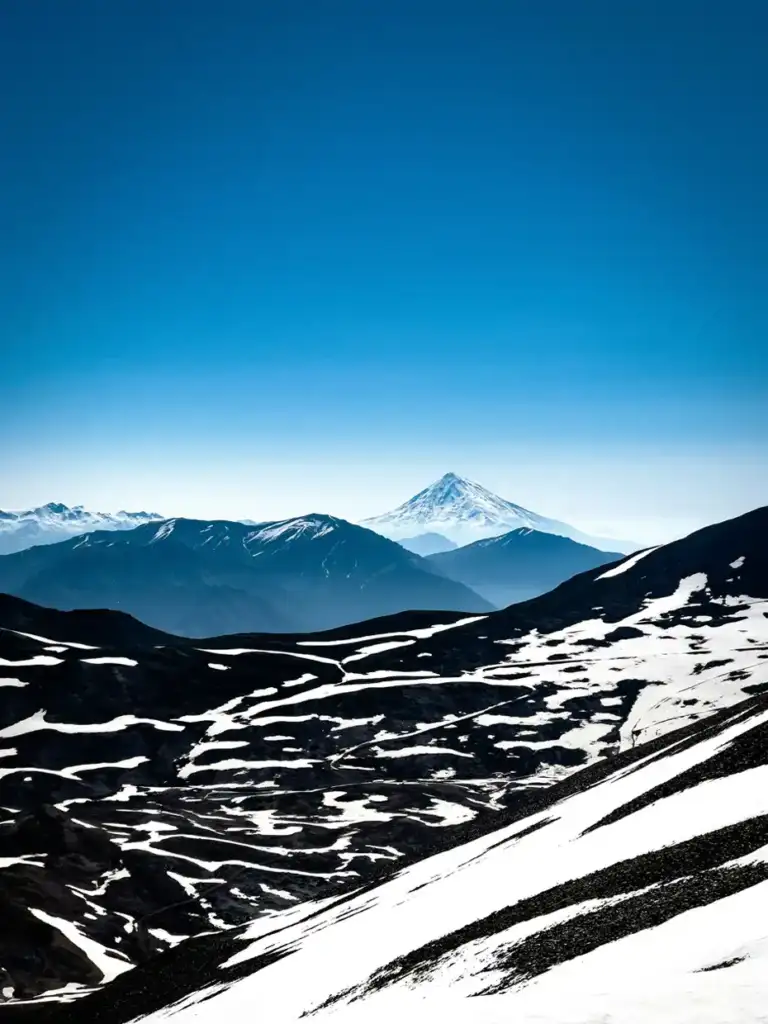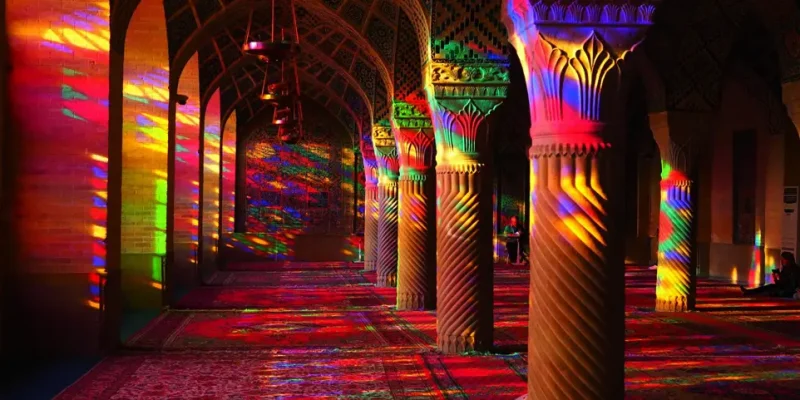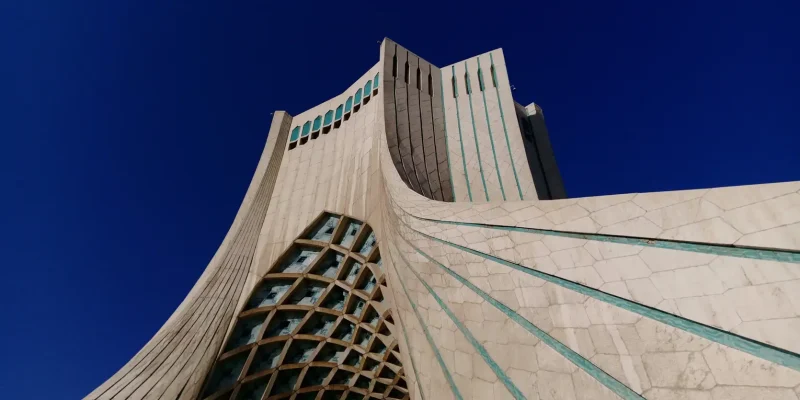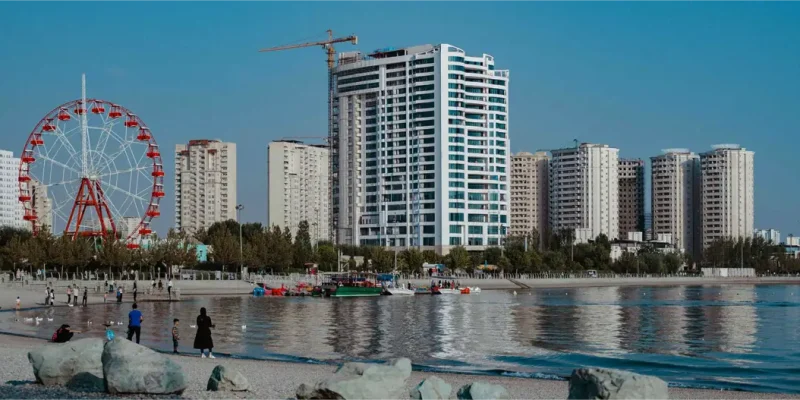
Damavand towers over Mazandaran Province. This mountain symbolizes natural splendor and historic value. It fascinates poets, adventurers, and historians. As Iran and the Middle East’s highest summit, Damavand has an appeal beyond its size. The peak embodies a complex web of cultural tales. It intrigues those curious about nature and culture’s overlap. This fabled mountain draws explorers and academics. It reveals secrets of the natural realm and ancient societies that thrived nearby.
This piece examines Damavand’s many sides. It starts with the mountain’s past and its key part in the area’s culture and politics. The text then dives into Damavand’s earth science showing how it formed and its special rock features. It also talks about the plants and animals on Damavand giving a peek at the many life forms that call the mountain home at different heights.
For those who want to climb, the article offers handy hints to make sure their trip to this famous peak is safe and fun. By covering all these topics, the write-up aims to give a full picture of Damavand drawing readers to learn more about this grand mountain’s lasting charm.
The Historical Significance of Mount Damavand

Mount Damavand holds a revered place in Iranian culture, deeply entwined with the nation’s mythology and literature. This mountain is not only a natural landmark but also a potent symbol of national identity and historical narratives.
Mythology and Legends
Damavand is central in Persian mythology, often depicted as a site of epic battles and mythical events. According to ancient texts, it is the imprisonment site of the tyrant Zahhāk by the hero Fereydūn in the epic Shahnameh . This tale symbolizes the eternal struggle between good and evil, with Damavand acting as the ultimate jailer. Legends also speak of a three-headed dragon, Aži Dahāka, chained within the mountain, embodying chaos and destruction that will remain until the world’s end . Such stories have cemented Damavand’s status as a mountain of great significance, viewed as a connector between the heavens and the earth, embodying cosmic power .
Mount Damavand in Persian Literature
Damavand’s influence extends into Persian literature, where it has been celebrated and revered through the ages. Iconic poets like Ferdowsi have immortalized Damavand through their poetic expressions, depicting it as a symbol of resilience and endurance . The mountain appears in numerous literary works, representing not only geographical but also metaphorical high points. For instance, in Mohammad Taqī Bahār’s poem, Damavand is portrayed as a “white giant with feet in chains,” a powerful image evoking the mountain’s majestic and bound nature .
Through these narratives and poetic lines, Mount Damavand transcends its physical form, becoming a beacon of cultural and spiritual significance that continues to inspire and influence the Iranian ethos. Its portrayal in literature and mythology not only highlights its beauty and mystery but also underscores its role as a symbol of national pride and historical consciousness.
Geological Facts About Mount Damavand
Formation and Structure
Mount Damavand is a prominent feature within the Alborz mountain range, located in northern Iran. This range has risen due to the collision between the Arabian and Eurasian tectonic plates . Damavand is classified as a strato-volcano, which means it is composed of multiple layers of hardened lava and volcanic ash . The current cone, known as Young Damavand, has been built over approximately 600,000 years atop an older, eroded edifice . This volcano rises from the southern rim of a large caldera, a crater-like structure formed by the collapse of land following a volcanic eruption . The summit area of Damavand includes solidified lava flows with distinct flow levees, which are natural barriers formed as the edges of flowing lava cool rapidly .
Volcanic Activity
Mount Damavand’s volcanic activity began approximately 1.78 million years ago, with the current structure forming about 600,000 years ago. The most recent eruption occurred around 5300 BCE, characterized by lava flows of trachyte, andesite, and basalt compositions. Despite the absence of historical records, ongoing thermal activities like the emission of hot sulphurous gases and the presence of hot springs indicate that Damavand is not extinct. There is an active magma chamber beneath the surface, approximately 2 to 5 kilometers deep, with a hotter inner region surrounded by cooled magma. Fumaroles and minor seismic activities suggest that Damavand is dormant but still has potential for future volcanic activity.

This geological complexity and the continuous monitoring of its volcanic activity make Mount Damavand a significant subject of study for volcanologists and geologists, providing insights into the volcanic processes and the natural history of this region.
Flora and Fauna of Mount Damavand
Plant Diversity
Mount Damavand hosts a remarkable variety of plant species, adapting to its unique climatic and geological conditions. The vegetation varies significantly with altitude and the mountain’s different faces. At heights between 2000 to 3500 meters, one can find the Damavand Poppy, known locally as Shaghayegh-e Lar, a species unique to this elevation range . The southern slopes are adorned with wild pistachio trees and various types of willow and oleaster along the riversides, while the northern slopes, due to higher humidity, support growth of wild oak, beech, hornbeam, and hazel trees .
The flora is particularly rich in species such as the Astragalus, which makes up about 40% of the Fabaceae family in this region, demonstrating a strong adaptation to mountainous and semi-arid conditions . The diversity continues with the presence of numerous endemic plants, including the Iris barnumiae demawendica, named after the mountain itself, which contributes to the area’s botanical significance .
Wildlife in the Region
The fauna of Mount Damavand is as diverse as its flora. The region provides habitat for a variety of mammals including the common hedgehog, several species of bats, the gray dwarf hamster, wolves, jackals, foxes, brown bears, and the Persian leopard . The avian population is robust, featuring species such as the golden eagle, Caspian snowcock, and various types of vultures and buntings, which are particularly adapted to the high-altitude environment .
Reptilian life thrives at lower elevations, including several species of vipers and the Caucasian agama, which are critical to the ecological balance . Unfortunately, the wildlife in this region faces threats from human activities such as excessive livestock grazing, road construction, and mining, which pose significant risks to the biodiversity .
This rich biodiversity underlines the ecological importance of Damavand, not only as a natural heritage site but also as a critical habitat that supports a wide array of life forms adapted to its unique environmental conditions.
Travel Tips for Visiting Mount Damavand
Best Time to Visit
Mount Damavand offers different experiences based on the season. July and August are the best months for climbing the summit, as it is warmer, with longer daylight hours and less snow. Porters are available up to 4250 meters. April and May are ideal for witnessing the bloom of anemones. January and February are suited for professional mountaineering. March to May is perfect for skiing. Autumn is great for hiking, bird-watching, and wildlife photography.
Accommodation Options
Mount Damavand has several accommodation options to cater to the needs of its visitors. There are seven shelters, bivouacs, and cottages with basic facilities along the main routes (north, south, northeast, and west), while the other twelve paths offer no such accommodations . Base camps and guesthouses in Polour village, Raineh town, and Nandal village provide more comfortable lodging options. These facilities allow for pre-booking, and local shops in these villages offer essentials, reducing the need to carry everything from home . For those who do not book in advance, renting a local house is also an option .
Conclusion
Throughout this exploration of Mount Damavand, we’ve traversed its historical, geological, and biological landscapes, uncovering the myriad ways in which it stands as a monument not only to nature’s grandeur but also to cultural identity and mythology. The mounting embodies a profound narrative, stretching from its foundation as a symbol of perseverance and resistance in Persian literature and mythology to its role in the natural world as a host to a diverse ecosystem. By examining Damavand through these various lenses, we not only celebrate its significance but also contribute to a deeper understanding of its multifaceted character.
As we conclude, it is clear that Mount Damavand is more than merely a peak to be summited; it is a testament to the enduring interplay between human culture and the natural environment. The implications of our findings extend beyond academic interest, offering a poignant reminder of the importance of preserving such natural wonders for future generations. By fostering an appreciation for Damavand’s rich history and vibrant ecosystem, we encourage further research and responsible tourism to ensure that its legacy continues to inspire and educate. This journey into the heart of Iran’s most iconic mountain has revealed the interconnectedness of geography, culture, and biodiversity, reinforcing the value of protecting our world’s natural and historical treasures.
FAQs
Mount Damavand is the highest peak in Iran and the Middle East, standing at 5,671 meters (18,606 feet) above sea level. It is a dormant stratovolcano located in the Alborz mountain range, northeast of Tehran. It holds cultural and historical significance in Iranian mythology and is an iconic natural landmark.
Although Mount Damavand is a dormant volcano, it is not considered extinct. It last erupted approximately 7,300 years ago. Today, it is known for its sulfuric springs, volcanic fumaroles, and unique geological features.
The best time to climb Mount Damavand is between June and September, when the weather is warmer, and the snow cover is less, making climbing conditions more manageable. During these months, the mountain trails are also more accessible for trekkers.
Climbing Mount Damavand is a challenging endeavor and is suitable for experienced climbers and trekkers with proper training and equipment. The altitude, steep slopes, and changing weather conditions require physical preparation. It is recommended to have an acclimatization period before attempting the summit.
Besides hiking and climbing, visitors can explore the surrounding region, including hot springs, natural parks, and the nearby villages. The area offers beautiful landscapes, unique wildlife, and a peaceful atmosphere, perfect for relaxation and nature exploration.



